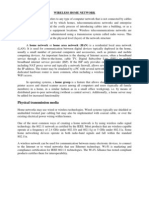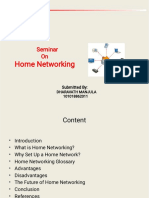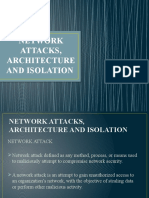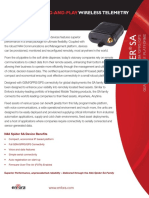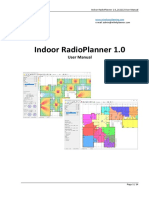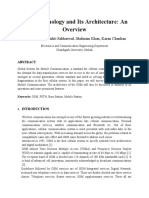0% found this document useful (0 votes)
101 views15 pagesDesign and Implementation of Wireless Home Network
This document summarizes a research article that reviews the design and implementation of wireless home networks. It discusses key concepts like wireless communication, classifications of wireless technologies, and applications of wireless in homes. The researchers aim to understand wireless home networking and provide skills for designing and implementing wireless solutions. Some benefits of wireless networks mentioned are sharing files, streaming media, sharing internet access, and connecting devices throughout the home without cables.
Uploaded by
Rochelle SiolaoCopyright
© © All Rights Reserved
We take content rights seriously. If you suspect this is your content, claim it here.
Available Formats
Download as PDF, TXT or read online on Scribd
0% found this document useful (0 votes)
101 views15 pagesDesign and Implementation of Wireless Home Network
This document summarizes a research article that reviews the design and implementation of wireless home networks. It discusses key concepts like wireless communication, classifications of wireless technologies, and applications of wireless in homes. The researchers aim to understand wireless home networking and provide skills for designing and implementing wireless solutions. Some benefits of wireless networks mentioned are sharing files, streaming media, sharing internet access, and connecting devices throughout the home without cables.
Uploaded by
Rochelle SiolaoCopyright
© © All Rights Reserved
We take content rights seriously. If you suspect this is your content, claim it here.
Available Formats
Download as PDF, TXT or read online on Scribd
/ 15










